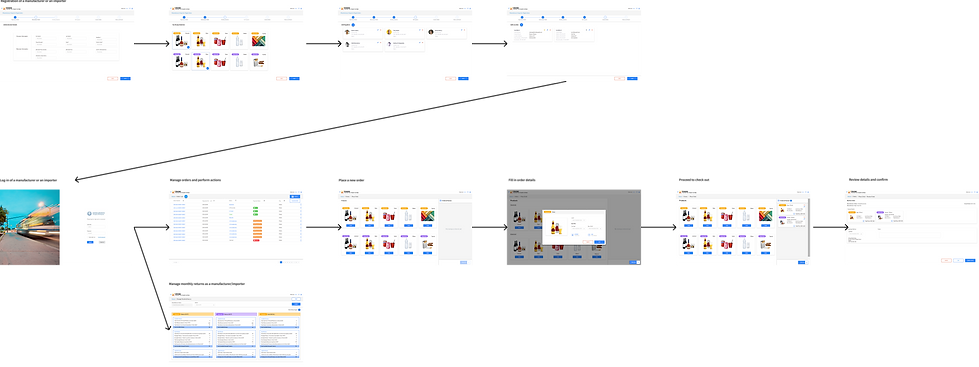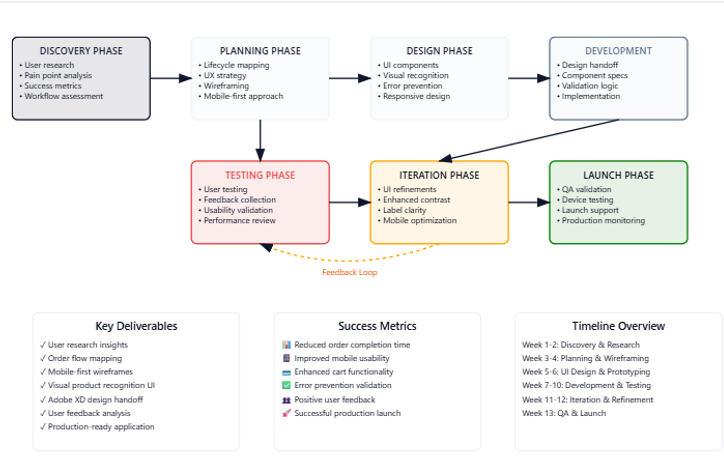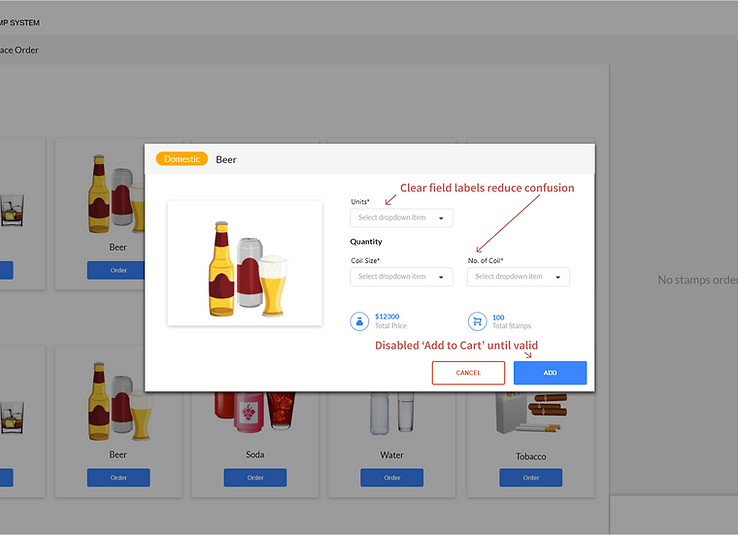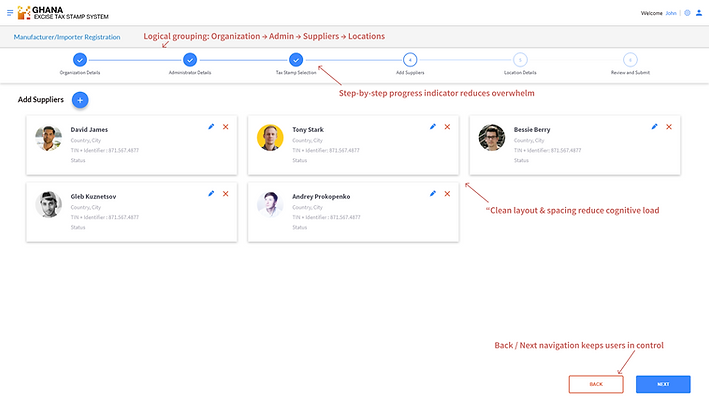Rameen Ghafoor
PRODUCT DESIGNER & PRODUCT OWNER
Case Study: Simplifying Regulatory Ordering for Excise Tax Stamp Platform
Key Takeaways
Redesigning and launching a compliant, mobile-friendly excise stamp ordering platform, reducing pricing errors and improving order success by ~28%.


🧠 Project Context
Regulatory platform for licensed manufacturers/distributors to order excise stamps for alcohol, soda, textiles, tobacco, water. Needed to support complex compliance workflows while staying usable in the field on mobile. Key needs: - Clear category separation (Domestic vs Imported) - Error-proof quantity & pricing entry - Persistent cart to review large orders - Mobile-first responsive UI - Integration with back-office ERP & compliance rules
🚀 My Role
I led end-to-end product design and acted as an application consultant: modeled regulatory workflows, gathered and translated requirements into user stories/backlog, worked with compliance/security teams and developers, prioritized features, supported pilot rollouts & UAT, created documentation & training for adoption.
🛠 Tools
- Design: Adobe XD - Product/Backlog: Atlassian, Aha - Research/Validation: user interviews, UAT pilots - Delivery: demo videos, training decks
🧩 My Process & Product Ownership
I mapped the entire ordering workflow from login to stamp delivery, ran stakeholder interviews, modelled regulatory steps, and translated findings into backlog/user stories. Designed and tested responsive flows (mobile-first), iterated on prototypes with compliance & dev teams, and supported UAT pilots and QA. Delivered training demos and documentation to drive adoption.

✍️ Key Insights Found
1. Persistent Cart for High-Volume Orders
🧩Challenge:
Large orders caused users to lose track of quantities and totals; switching screens to check the cart led to mistakes and abandonments.
💡Solution:
Sticky “Ordered Stamps” bar (mobile) / side panel (desktop) showing dynamic totals, expandable for quick edits.
🎯 Expected Impact:
Reduce abandoned orders and pricing errors; support ~28% improvement in order success.


Error Prevention (guardrails and disabled submission until valid), Efficiency of Use (fewer corrections and rework).
2. Clear Stamp Type Differentiation
🧩Challenge:
Users confused domestic vs imported stamp categories, leading to invalid orders.
💡Solution:
Visual product cards with images + color-coded tags (orange = Domestic, purple = Imported).
🎯 Expected Impact:
Minimise misclassification errors and support compliance, lowering helpdesk intervention.

- Recognition over Recall – show information and options visually so users can identify the right choice without remembering details.
- Consistency – keep layouts, colors, and interactions predictable across the product to reduce learning effort.
- Affordance & Signifiers – design elements so their purpose is obvious (e.g., cards look clickable, color tags signal category).
3. Guided Multi-Step Registration
🧩Challenge:
Complex, compliance-heavy registration overwhelmed new users, causing drop-off.
💡Solution:
Stepper-based flow with clear sections (organization, admin, suppliers, locations) and Back/Next controls.
🎯Expected Impact:
Smoother onboarding → fewer incomplete registrations and support calls.

- Progressive Disclosure – reveal complex information step-by-step so users only see what’s needed at the moment.
- Clarity & Hierarchy – organize content visually (size, color, layout) so the most important actions and data stand out first.
- Cognitive Load Reduction – simplify screens and break tasks into smaller chunks so users can understand and act without feeling overwhelmed.
✅ Outcome & Impact
- Increased order success rate by ~28% - Significantly reduced order errors and pricing miscalculations - Helpdesk load decreased due to improved input clarity - Cart redesign improved conversion on mobile devices
🪞 Reflection
Real-time feedback and progressive disclosure proved critical in simplifying a complex, regulation-heavy ordering process. Going forward, I’d expand on this foundation by adding saved draft orders for repeat workflows, inline guidance to clarify coil and stamp calculations, and deeper analytics on order flows to drive future audits and continuous optimization.
